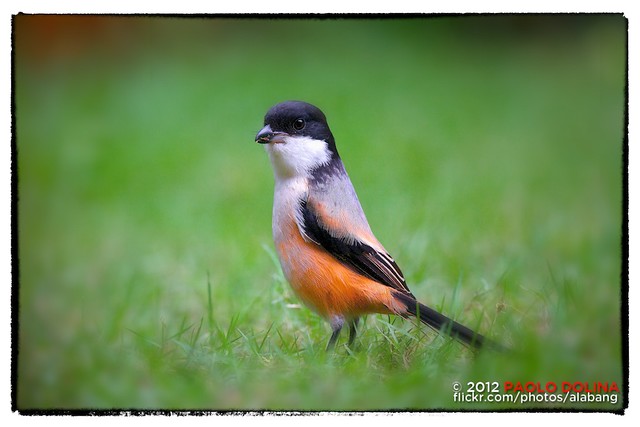Little Egret, Olango 03/15/13
Results 681 to 690 of 1262
Thread: Bird photography
-
03-16-2013, 09:49 AM #681
-
03-16-2013, 05:53 PM #682
-
03-17-2013, 06:22 PM #683

Whiskered Tern in Flight by Gerald Yuvallos, on FlickrLast edited by BeoR; 03-17-2013 at 11:24 PM.
-
03-17-2013, 10:59 PM #684
-
03-17-2013, 11:32 PM #685

Grey Plover by Gerald Yuvallos, on Flickr
-
03-18-2013, 06:07 AM #686
Thank you adjong & insecure. Great images Lanze, jajarbinx, BeoR,

Long-tailed Shrike (Lanius schach) by alabang, on Flickr
This species has an extremely large range, and hence does not approach the thresholds for Vulnerable under the range size criterion (Extent of Occurrence <20,000 km2 combined with a declining or fluctuating range size, habitat extent/quality, or population size and a small number of locations or severe fragmentation). The population trend is not known, but the population is not believed to be decreasing sufficiently rapidly to approach the thresholds under the population trend criterion (>30% decline over ten years or three generations). The population size has not been quantified, but it is not believed to approach the thresholds for Vulnerable under the population size criterion (<10,000 mature individuals with a continuing decline estimated to be >10% in ten years or three generations, or with a specified population structure). For these reasons the species is evaluated as Least Concern.
Source: Megalurus palustris (Striated Grassbird)
Taken in Muntinlupa City
Settings: 1/160 ƒ/5.6 ISO400 800mm
-
03-18-2013, 07:26 PM #687
Thanks Pao,


Asian Dowitchers @ Olango Island 03/15/13
-
03-18-2013, 07:31 PM #688

Yellow Bittern @ Villa Dolina, Marasbaras, Tacloban
-
03-19-2013, 12:56 AM #689
Thanks Paolo!

Egret in Flight by Gerald Yuvallos, on Flickr
-
03-19-2013, 07:34 AM #690

Black-crowned Night Heron (Nycticorax nycticorax) by alabang, on Flickr
Despite being fairly ubiquitous on a global level, the slightly unusual nocturnal habit of the black-crowned night heron renders it less conspicuous than most other herons (2) (3) (4). Of moderate size for a heron, this stockily built species has short legs and a short neck, with the male, on average, being the slightly larger of the sexes (2) (5). As its name suggests, the adult black-crowned night heron has a glossy, black cap that extends down the upper back, while the rest of the body plumage generally ranges from white to ashy grey (2) (5). The nape is adorned with two to three long, white plumes reaching up to 25 cm in the breeding season (5). The stout bill is black in colour, the eyes, a piercing crimson, and the legs, yellow-green for most of the year but becoming pink during the breeding season (2) (5). Juveniles are mostly brown, with heavy striping and pale spots, but as they grow towards the adult plumage, become more solidly dark above and pale below (2). Four subspecies that differ subtly in appearance and occupy different ranges are currently recognised: Nycticorax nycticorax nycticorax, N. n. hoactli, N. n. obscurus and N. n. falkandicus (2) (5).
Source: Black-crowned night-heron videos, photos and facts - Nycticorax nycticorax - ARKive
Taken in Valenzuela City, Philippines
Settings: 1/640 ƒ/4 ISO400 500mm
Advertisement
Similar Threads |
|






 Reply With Quote
Reply With Quote


